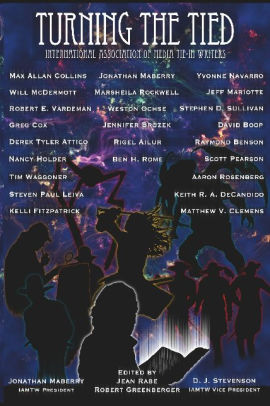Marsheila Rockwell and I share a TOC for the forthcoming Turning the Tied anthology that will benefit the World Literacy Foundation. Today, she tells me her thoughts on how Ozma connects her the Ojibwe.

The story I have in IAMTW’s upcoming Turning the Tied anthology is called “A Prisoner Freed in Oz” and features Ozma of Oz. For those not familiar with her story (as detailed in L. Frank Baum’s The Marvelous Land of Oz), Ozma was born a girl, but as a baby was magically transformed into a boy named Tip, and lived as a boy until her teens, when she was finally transformed back into her true self. Modern readers will no doubt see a parallel to the transgender experience, although the book was first published in 1904, before that word was coined and well before it was an acceptable experience to write about in a children’s book.
Many people mistakenly believe that gender variance is a new idea, perhaps born out of the Sexual Revolutions of the 1920s or 1960s. But the character of Ozma hints that gender variance has existed for much longer than that, though perhaps not as openly expressed as it is today.
I am a reconnecting Chippewa (Ojibwe)/Métis (I’m not changing the subject, I promise). Broadly, ‘reconnecting’ in this context refers to an Indigenous person who was denied access to their tribe’s culture and heritage while growing up and is trying to rectify that situation as an adult, without the benefit of parents or grandparents to bridge the gap. Part of that effort (at least for me) includes trying to educate myself about and become active in Indigenous causes. It was during that process that I learned that many Indigenous tribes/nations recognized and accepted the concept of gender variance long before colonizers ever set foot on Turtle Island.
Specific beliefs and terminology varied from tribe to tribe—for instance, the Navajo called such people nadleeh and the Lakota used the term winkte. Gender variants included feminine woman, masculine woman, feminine man, masculine man, and sometimes both, or neither. Roles for such individuals varied depending on their tribe/nation, as well. Being Chippewa, I’ll focus on those beliefs.
According to Anton Treuer (Ojibwe), professor of Ojibwe linguistics at Bemidji State University, “the Ojibwe accepted variation. Men who chose to function as women were called ikwekanaazo, meaning ‘one who endeavors to be like a woman.’ Women who functioned as men were called ininiikaazo, meaning, ‘one who endeavors to be like a man.’” He goes on to say that the part played by these individuals, “was considered to be sacred, often because they assumed their roles based on spiritual dreams or visions.”
Today, ‘Two-Spirit’ is used as an umbrella term to try to capture the Indigenous gender variant experience. The word was coined in 1990 to replace the anthropological term berdache, which had traditionally been used to identify gender-variant Indigenous individuals. The etymology of that word, however, stems from the French bardache, which can be taken to mean “male prostitute,” and is patently offensive. While no experience is universal to all Indigenous people, and one word cannot possibly be used to frame an experience which differs across 574 federally recognized tribes, ‘Two-Spirit’ has, as its Wikipedia article notes, “generally received more acceptance and use than the term it replaced.”
So, long story short (ha!): Gender variance has been part of humanity for probably as long as there have been humans. Sadly, Ozma and the Ojibwe notwithstanding, acceptance of gender variance has been around for a much shorter time. But I look forward to the day when acceptance of all our differences will be the norm. Maybe my story will help with that. I hope so.
#TurningTheTied
---
Marsheila (Marcy) Rockwell is the author of twelve SF/F/H books, dozens of poems and short stories, several articles on writing and the writing process, and a handful of comic book scripts. She is also a disabled pediatric cancer and mental health awareness advocate and a reconnecting Chippewa/Métis. She lives in the Valley of the Sun with her husband, three of their five children, two rescue kitties (one from hell), and far too many books.